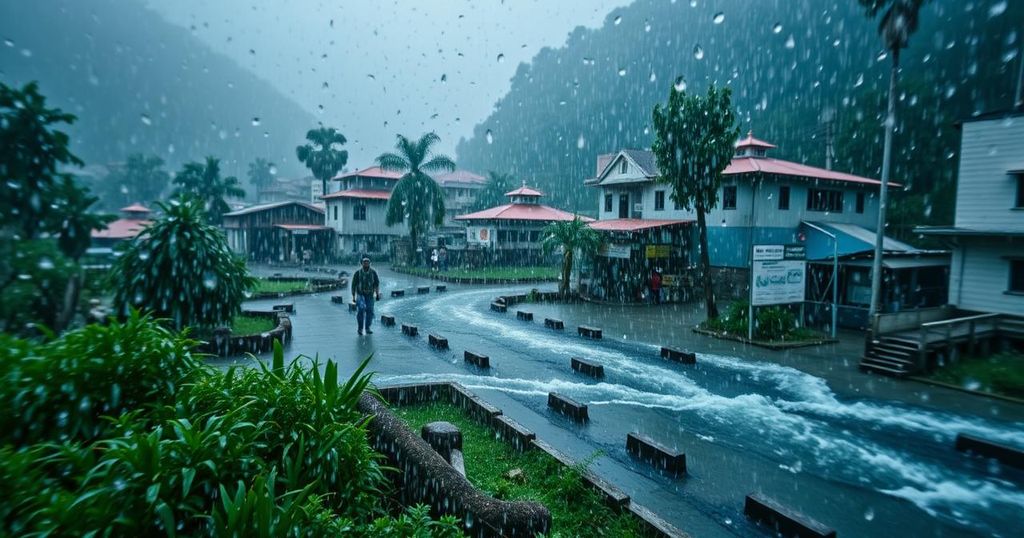Human-Induced Climate Change Intensifies Rainfall in Nepal, Scientists Report

A study by World Weather Attribution indicates that human-caused climate change made late September rainfall in Nepal approximately 10% more intense, contributing to floods that killed over 240 people. The research suggests that urban development in flood-prone areas should be limited to reduce future risks. The floods resulted from extreme rainfall, leading to catastrophic impacts in Kathmandu, emphasizing the need for better disaster management and climate resilience.
A recent analysis conducted by World Weather Attribution (WWA) has revealed that human-induced climate change has intensified rainfall in Nepal, contributing to the severe floods that occurred in late September. These floods resulted in over 240 fatalities and were characterized by rainfall approximately 10 percent more intense than typical due to climate change. The devastating flooding that impacted central and eastern Nepal commenced following three days of heavy rainfall, with records indicating some weather stations received upwards of 320 mm on September 28 alone. The flooding caused considerable destruction, especially in the Kathmandu valley, where eyewitness accounts suggest such severe flooding had not been witnessed before, leading to losses in infrastructure and economy totaling billions of rupees. The research team underscored the urgent need for Nepal to limit future development in low-lying areas susceptible to flooding, particularly along riverbanks. Such preventative measures are vital for safeguarding communities from potential future disasters. The findings highlight the rapid urban growth of Kathmandu, which has largely occurred in flood-prone regions, exacerbating the effects of this disaster. WWA, comprising an international team of scientists, aims to assess the influence of climate change on extreme weather phenomena. The insights from this study indicate a clear correlation between emissions from fossil fuels and the intensity of these devastating storms. Notably, Mariam Zachariah of the Centre for Environmental Policy, Imperial College London, stated, “If the atmosphere wasn’t overloaded with fossil fuel emissions, these floods would have been less intense, less destructive and less deadly.” Additionally, the urgency of addressing climate vulnerability in Asia is highlighted by Roshan Jha from the Indian Institute of Technology, Bombay, who noted, “Clearly, climate change is no longer a distant threat in Asia.” As part of the study, recommendations were made for enhancing early warning systems and implementing prompt responses to mitigate future flooding risks.
The backdrop of this analysis is the increasing frequency and intensity of extreme weather events attributed to climate change, which has raised substantial concerns among scientists and policymakers. In recent years, Asia has been particularly affected by severe flooding events, making it critical to explore the relationship between climate change and such disasters. The research conducted in Nepal follows a devastating flood incident that was attributed to heightened rainfall largely due to human activities affecting climate patterns. The study reveals a pressing need for strategic urban planning and disaster preparedness to diminish the impacts of future climate-related events.
In summary, the findings from the World Weather Attribution study underscore that human-induced climate change significantly contributed to the severity of the recent floods in Nepal. This event highlights the urgent requirement for Nepal to reassess urban development policies, especially in vulnerable areas, to protect its citizens. Policymakers must prioritize climate resilience strategies and enhance disaster preparedness to mitigate the impact of expected future extreme weather incidents.
Original Source: www.theweek.in






